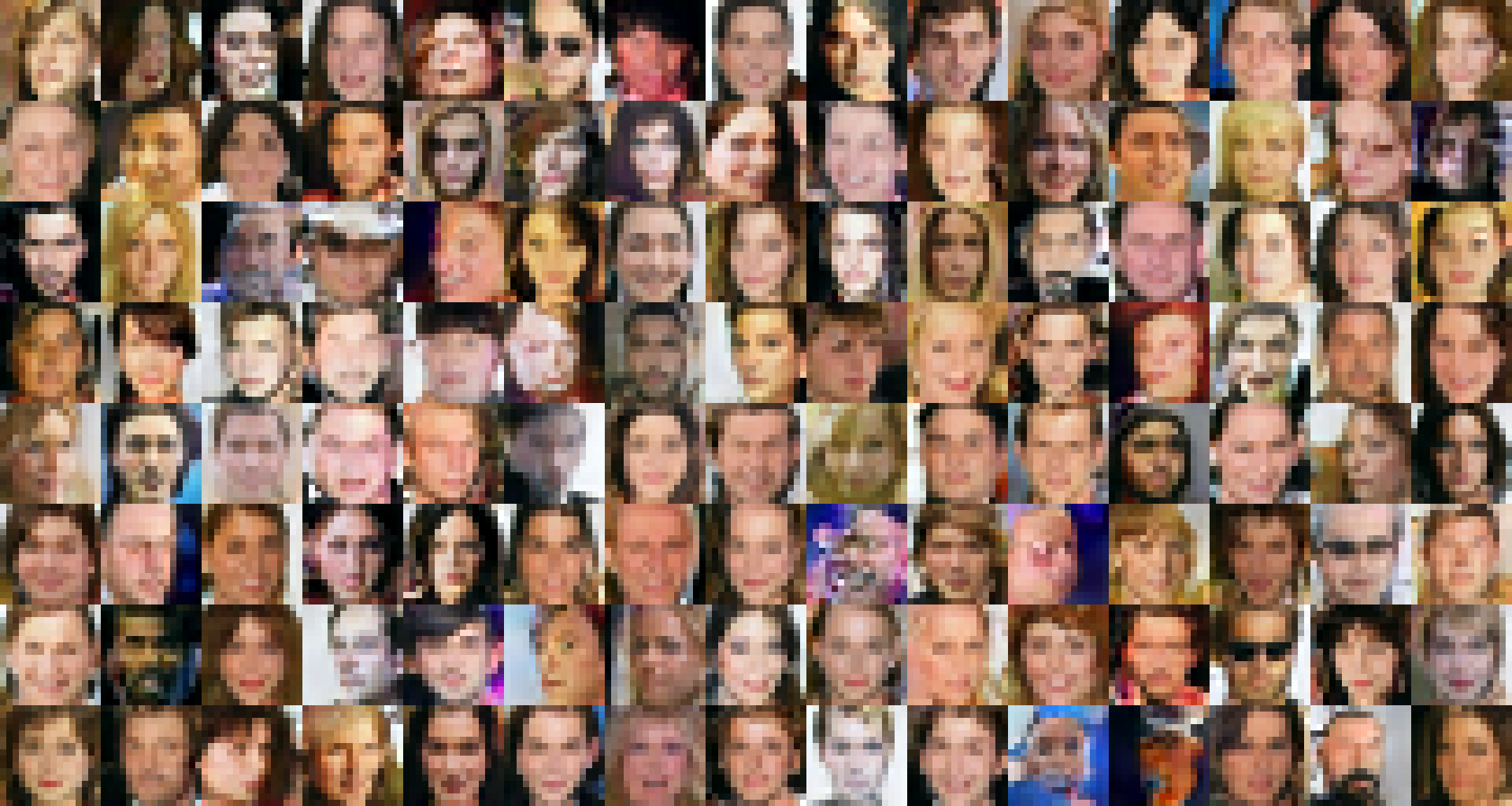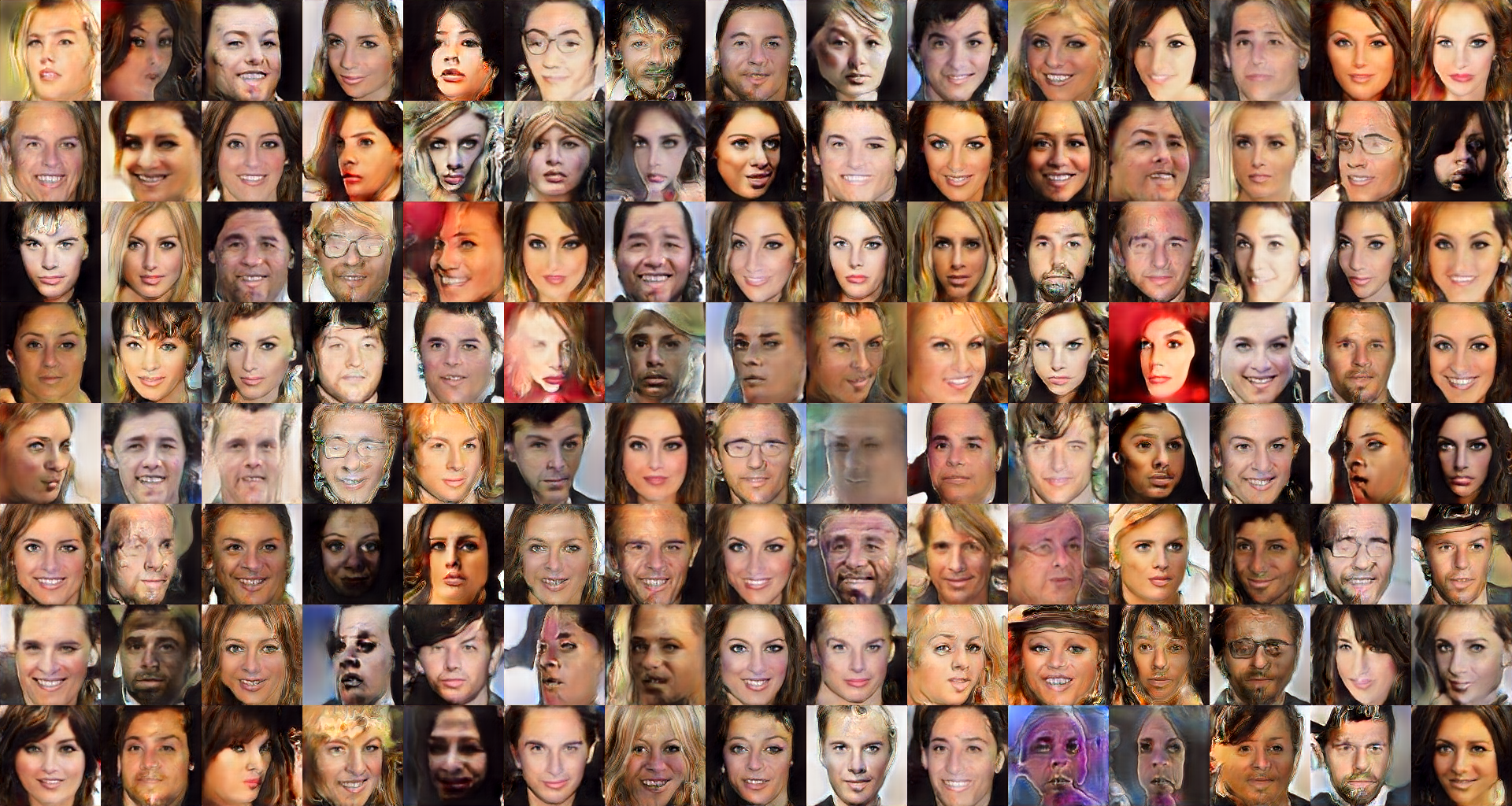Keras implementation of Progressive Growing of GANs for Improved Quality, Stability, and Variation.
Developed by BUAA Microsoft Student Club.
Leader Developers: Kun Yan, Yihang Yin, Xutong Li
Developers: Jiaqi Wang, Junjie Wu
- Python3
- keras 2.1.2 (TensorFlow backend)
- CelebA Dataset
First download CelebA Dataset.
Run h5tool.py to create HDF5 format datatset. Default settings of h5tool.py will crop the picture to 128*128, and create a channel-last h5 file.
$ python3 h5tool.py create_celeba_channel_last <h5 file name> <CelebA directory>
Modify config.py to your own settings.
# In config.py:
data_dir = 'datasets'
result_dir = 'results'
dataset = dict(h5_path=<h5 file name>, resolution=128, max_labels=0, mirror_augment=True)
# Note: "data_dir" should be set to the direcory of your h5 file.
We only support CelebA dataset for now, you may need to modify the code in dataset.py and h5tools.py if you want to switch to another dataset.
$ python3 train.py
In train.py:
# In train.py:
speed_factor = 20
# set it to 1 if you don't need it.
"speed_factor" parameter will speed up the transition procedure of progressive growing of gans(switch resolution), at the price of reducing images' vividness, this parameter is aimed for speed up the validation progress in our development, however it is useful to see the progressive growing procedure more quickly, set it to "1" if you don't need it.
So far, if your settings have no problem, you should see running information like our running_log_example
Parameters in train.py will determine the frequency of saving the training result snapshot. And if you want to resume a previous result, just modify train.py:
# In train.py:
image_grid_type = 'default',
# modify this line bellow
# resume_network = None,
# to:
resume_network = <weights snapshot directory>,
resume_kimg = <previous trained images in thousands>,
We provide main.py for remote training for Visual Stdio or Visual Stdio Code users. So you can directely start the training process using command line or VS Debugger, which will be convenient in remote job submission.
$ python3 main.py --data_dir = <dataset h5 file directory> \
--resume_dir = <weights snapshot directory> \
--resume_kimg = <previous trained images in thousands>
These two pictures are the training result we get so far, trained for 5 days on a NVIDIA GeForce 1080-ti GPU. You should be able to see the changes of resolution during the progressively growing procedure of our model. Pretrained weight will be available later.
Any bug report or advice, please contact us:
Kun Yan (naykun) : yankun1138283845@foxmail.com
Yihang Yin (Somedaywilldo) : somedaywilldo@foxmail.com
-
Progressive Growing of GANs for Improved Quality, Stability, and Variation, Tero Karras (NVIDIA), Timo Aila (NVIDIA), Samuli Laine (NVIDIA), Jaakko Lehtinen (NVIDIA and Aalto University) Paper (NVIDIA research)
-
tkarras/progressive_growing_of_gans (https://github.com/tkarras/progressive_growing_of_gans
-
github-pengge/PyTorch-progressive_growing_of_gans (https://github.com/github-pengge/PyTorch-progressive_growing_of_gans)
Our code is under MIT license. See LICENSE
We have translated the original paper to Chinese briefly, a markdown version is available now, hope this will benefits chinese users.

